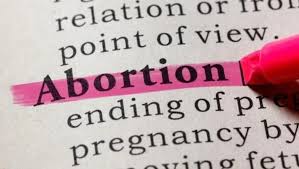Woman laws at Serbia
Here’s an up-to-date, well-structured overview of women’s legal rights and protections in Serbia:
1. Legal Foundations & International Commitments
Constitutional Equality & Anti-Discrimination
The 2006 Constitution of Serbia enshrines gender equality and prohibits both direct and indirect discrimination, including on the basis of sex, gender identity, sexual orientation, marital, and family status
International Treaties
Serbia has ratified key instruments, including:
CEDAW
Istanbul Convention (Council of Europe Convention on preventing and combating violence against women and domestic violence)
These frameworks form the backbone of Serbia's legal and policy commitments for women's rights.
2. Gender Equality Legislation & Institutional Measures
Law on Gender Equality (2021) & Prohibition of Discrimination Amendments
Adopted in April 2021, this law imposes mandatory duties on public agencies, employers, and private entities to promote gender equality and penalize discrimination, especially in workplaces
Gender Equality Strategy 2021–2030
Lays out long-term objectives for closing gender gaps, with gender equality positioned as essential for societal advancement
Gender-Responsive Budgeting (GRB)
Introduced via the Budget System Law in 2015, GRB requires government budgets at all levels to include gender perspectives. By 2022, most ministries incorporated gender-sensitive measures into their budgets
3. Protections Against Violence & Domestic Abuse
2017 Law on the Prevention of Domestic Violence
Enforces institutional coordination (police, prosecutors, social services), empowers emergency protective measures—including removing perpetrators—and imposes liability for officials failing to act
Criminal Code Updates & Istanbul Convention
Criminalizes stalking, forced marriage, FGM, and explicitly addresses rape—though currently still defined as involving force rather than lack of consent, posing a gap with Istanbul Convention requirements
Challenges in Implementation
GREVIO welcomes legislative progress but criticizes weak enforcement, insufficient specialized support services (e.g., for rape and stalking), and limited legal aid availability
Worrisome Statistics (UN Women)
A 2023 study revealed stark realities:
On average, one woman is killed every two weeks by a partner at home.
The gender pay gap sits at 14.4%.
Among Roma girls, every third adolescent is already pregnant or parenting.
Healthcare is stretched, with just one gynecologist per 5,812 women.
4. Workplace Equality & Economic Participation
Workforce Representation & Pay Gap
The labor force participation rate for women is around 49%, with women earning on average 8.8% less than men.
Political Representation
Women hold approximately 38% of parliamentary seats, and Serbia ranks highly in ministerial participation compared to EU peers
Caregivers & Unpaid Work
The gender gap in caregiving-induced workforce withdrawal has narrowed—from 1.3% in 2015 to 0.4% in 2023
Implementation Gaps
Despite strong frameworks, women remain underrepresented in decision-making. Unpaid care and economic inequality persist
5. Reproductive Rights: Abortion
Legal Framework
Abortion has been legal since 1977:
Available on demand up to 10 weeks.
Allowed later if there’s a threat to life/health, rape/incest, or fetal impairment (up to 20 weeks).
Minors under 16 require parental consent
Constitutional Right
The Constitution asserts that “everyone has the right to decide on childbirth,” which implicitly supports abortion rights
Practical Concerns
Serbia reports one of the highest abortion rates in Europe, stemming from limited sex education and contraception access. Some abortions beyond legal limits are facilitated through questionable documentation. Licensing challenges may also drive unsafe, unreported procedures
6. Monitoring & Citizen Advocacy
Ombudsman’s Office (Protector of Citizens)
Established by the 2006 Constitution, it handles rights violations, including gender and children’s issues. Deputies specialize in gender equality and can recommend legal or disciplinary actions .
Civil Society Pressure on LGBTQ+ Rights
While feminism and women's rights frameworks are advancing, LGBTQ+ rights lag behind. Activists continue advocating for laws on same-sex partnerships and gender identity, as seen in growing pride movements and public calls for legislative change
Political Milestones: Women in Justice & Leadership
Judicial Firsts in Serbia:
Marija Milutinović Punktatorka — first female lawyer (1847)
Vida Petrović-Škero — first female judge (1978)
Leposava Karamarković — first female President of the Supreme Court of Cassation (2001)
Bosa Nenadić — first female President of the Constitutional Court (2007)
Nata Mesarović — first female President of the Supreme Court of Cassation (2009)
Jasmine Milutinović — first female President of the Bar Association (2021)
Prime Minister Ana Brnabić
Appointed in 2017, she is Serbia’s first female (and openly lesbian) Prime Minister, and her appointment marked a milestone for LGBTQ+ visibility, though Ken continues to call for more substantial reforms
Summary Table
| Domain | Serbia – Status |
|---|---|
| Legal Equality | Constitution prohibits gender discrimination; Law on Gender Equality (2021) enacted |
| Violence Protections | Istanbul Convention ratified; 2017 Law on Domestic Violence; implementation gaps |
| Support Services | Limited; NGOs fill essential roles; legal and counseling support unevenly available |
| Economic & Political Rights | Progress via GRB, better representation, persistent pay and unpaid work gaps |
| Reproductive Rights | Legal abortion under defined circumstances; persistently high rates in practice |
| Monitoring Mechanisms | Ombudsman office active; civil society advocacy ongoing, especially for LGBTQ+ |
| Leadership | Several judicial firsts; first female PM; increasing yet insufficient representation |
Bottom Line
Serbia has implemented a comprehensive legal framework supporting women’s rights—constitutional protections, gender equality laws, domestic violence prevention acts, and structures like GRB and the Ombudsman’s Office. Yet, implementation remains uneven, with major challenges in enforcement, infrastructure, support services, and social norms.
















0 comments